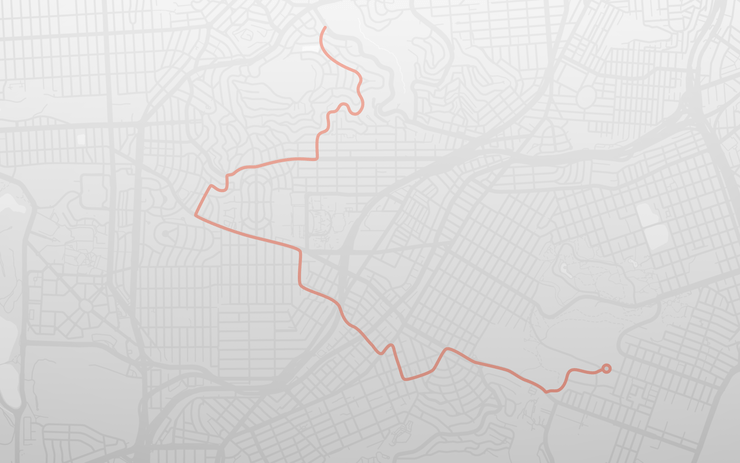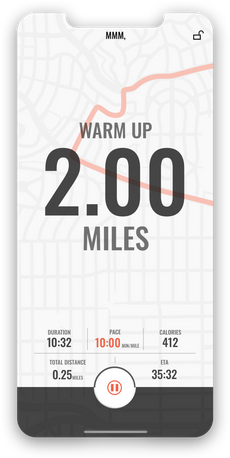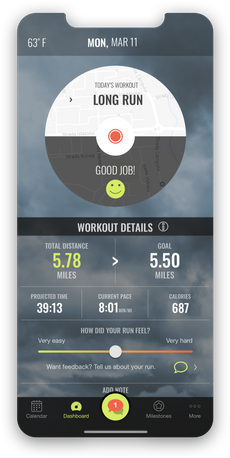Setting realistic race goals
May 14th 2020
by Matt Forsman a.k.a. Marathon MattI toed the line at my first marathon with lofty goals. I'd qualify for Boston. I'd break 3:00. My first marathon would be glorious.
26.2 miles later, I was confronted with a glorious disaster as I hobbled my way across the finish line. Little had gone right. I had no one to blame but myself.
I'd made every rookie mistake one could make. I didn't respect the distance. I'd gone out too fast. I'd defined race goals that were grossly inappropriate.
Defining appropriate race goals can be tricky. There are a multitude of factors to consider and there's some work involved. But, If you're interested in notching a personal best, running at a high level, or simply enjoying your race experience, it behooves you to do the work and nail down realistic race goals.
Read on for a few things to keep in mind when defining your race goals.
How to set realistic running goals?
Don't set overly aggressive goals for your first race.
Few people actually cover 26.2 miles during the course of their training for the marathon. So, there are likely things you're going to experience on race day that you've never experienced during training.
With this in mind, if you're notching your very first 26.2 miles, your best bet is to simply focus on completing the distance as comfortably as possible. Save the aggressive goals for the second or third crack at the marathon.
Granted, if you're a seasoned/savy runner who has notched numerous half marathons and posted a time that generally 'projects' to a Boston qualifying time, a goal of qualifying might be reasonable. But, few first time marathoners fall into this category.
Whatever distance you're training for currently, tread lightly if it's your first time toeing the line. The energy and adrenaline of race day can absolutely give you a boost. But, this boost will not enable you to do something superhuman.
Set goals that align with your training.
Ideally, the goals you set for race day should have some basis in reality. If you're training for a half marathon and wondering what kind of time you can manage, take a close look at your long runs. What kind of pace have you been able to manage comfortably for them?
Generally speaking, if you can manage 75-80% of your race distance at pace 'X', you 'should' be able to manage the entirety of the distance at this pace on race day. This assumes you've done the proper training and the stars align.
Whether you're training for 26.2, 13.1, or any other distance, your goals should generally align with what you've done during the course of your training.
Tune up, evaluate, and recalibrate.
I'm a big fan of doing a 'tune up' race roughly 50-65% of the way through a training cycle. A tune up race is a great way to evaluate what kind of shape you're in. It's also a great way to determine how close (or far) you are from your race goals.
If your tune up race goes swimmingly, this gives you a great data point. You may be right on track for a great race. If things don't go well, it may be time to recalibrate.
You may need to adjust your training to better align with your race goals. You may need to adjust your race goals depending upon how much time is left in your training cycle. A quality tune up race can be hugely beneficial in helping you define quality race goals.
Define multiple race goals.
Throughout this piece, I've used the word 'goals' rather than 'goal'. There's a good reason for this. It's a bad idea to head into a race with one, singular goal.
Things happen on race day that you can't control. Maybe the weather gods frown on you. Maybe you find yourself battling GI issues.
Defining your race goals is similar to applying to college. You've got your 'dream' goal, your 'target' goal, and your 'safety' goal. I'd also add one additional goal. The 'finish' goal.
If you're training for a half marathon and your training generally aligns with a 2:00 finish time, your dream goal might be 1:59 (or faster). Your target goal might be 2:00-2:05. Your safety goal might be 2:05-2:10. Your finish goal would simply be to 'finish' the race.
Setting multiple goals allows you to adapt to the things you can't control. Having multiple goals defined also pretty much guarantees that you won't walk away from a race empty handed. It's a near certainty that you will nail at least one of your goals.







